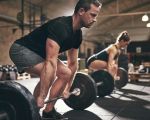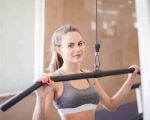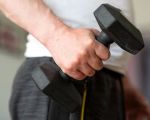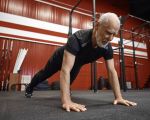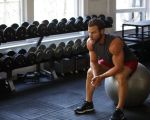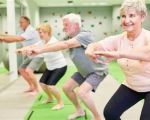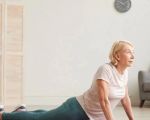- 1-Understanding-Bodyweight-HIIT-for-Beginners
- 2-Key-Benefits-of-Bodyweight-HIIT-Workouts
- 3-How-to-Start-a-Bodyweight-HIIT-Routine-Safely
- 4-Effective-Exercises-for-Beginners
- 5-Common-Challenges-and-How-to-Overcome-Them
- 6-Tips-for-Maximizing-Results-and-Staying-Motivated
1. Understanding Bodyweight HIIT for Beginners
Bodyweight HIIT workout for beginners offers a highly effective, accessible way to improve cardiovascular fitness, strength, and overall health without needing any equipment. HIIT, or High-Intensity Interval Training, revolves around alternating short bursts of intense exercise with brief periods of rest or low-intensity movement. For beginners, bodyweight HIIT means using only your own body as resistance, making it perfect for those just starting out or looking for a no-cost workout option at home.
This type of workout has gained significant popularity in recent years because it delivers maximum results in minimum time, making it ideal for busy lifestyles. For example, a 20-minute session can burn calories equivalent to a longer steady-state cardio workout. But beyond fat loss, bodyweight HIIT builds endurance, improves metabolic rate, and promotes muscle tone. Importantly, beginners can customize intensity to their level, reducing injury risk and building confidence over time.
Many people hesitate to try HIIT, fearing it’s too advanced or demanding, but starting with bodyweight exercises makes it approachable. Fitness platforms like Fitness offer tailored beginner programs and advice that help ease the transition into this dynamic training style, guiding users on proper form and progression. With the right approach, bodyweight HIIT can be a sustainable and enjoyable part of anyone’s fitness routine.
2. Key Benefits of Bodyweight HIIT Workouts
The benefits of bodyweight HIIT for beginners extend beyond weight loss. First, it dramatically improves cardiovascular health. Research shows that HIIT can increase VO2 max (a measure of aerobic fitness) more efficiently than traditional steady-state cardio. This means your heart and lungs work better during daily activities, improving energy levels and endurance.
Second, bodyweight HIIT enhances muscular strength and endurance. Because the exercises often involve full-body movements like squats, push-ups, and planks, multiple muscle groups work simultaneously, leading to balanced muscle development. This functional strength improves posture, reduces injury risk, and supports everyday movements.
Third, the metabolic boost from HIIT means your body continues to burn calories even after the workout, a phenomenon known as Excess Post-exercise Oxygen Consumption (EPOC). For beginners aiming to lose weight or tone up, this “afterburn effect” is a valuable benefit. Additionally, bodyweight HIIT workouts improve insulin sensitivity, which can reduce the risk of type 2 diabetes.
Finally, mental health benefits such as reduced stress and improved mood are commonly reported by HIIT practitioners. The challenge and accomplishment of completing a high-intensity session release endorphins, which elevate mood and enhance motivation to keep going.
3. How to Start a Bodyweight HIIT Routine Safely
Safety is crucial when starting a bodyweight HIIT workout for beginners. Begin by assessing your current fitness level honestly and consulting with a healthcare provider if you have any underlying health conditions. Starting slow is key—focus on mastering proper form before increasing intensity.
Begin with shorter intervals, such as 20 seconds of work followed by 40 seconds of rest, and gradually reduce rest time as fitness improves. Warm-up before each session with dynamic stretches or light cardio to prepare your muscles and joints, reducing injury risk.
Listen to your body throughout the workout. If you experience sharp pain, dizziness, or extreme breathlessness, stop immediately. Hydration and proper nutrition also support recovery and performance. Fitness provides beginner-friendly HIIT routines and expert tips on safe progression that can help you avoid common pitfalls.
4. Effective Exercises for Beginners
Choosing the right exercises is essential for a successful bodyweight HIIT workout for beginners. Compound movements that engage multiple muscle groups are ideal. For example:
4.1 Squats
Squats activate the legs, glutes, and core. Beginners should focus on controlled movement—feet shoulder-width apart, back straight, and knees tracking over toes. Squats build foundational lower body strength and mobility.
4.2 Modified Push-Ups
Start with knee push-ups if full push-ups are too challenging. This builds upper body and core strength progressively while minimizing strain.
4.3 Plank Holds
Planks engage the entire core, essential for stability and injury prevention. Beginners can start with 15-20 second holds and increase duration over time.
Combining these with short bursts of cardio moves like jumping jacks or high knees keeps the heart rate elevated. Fitness offers curated beginner workouts featuring these exercises with clear instructions and progressions.
5. Common Challenges and How to Overcome Them
Many beginners face obstacles like fatigue, motivation dips, or uncertainty about proper technique. Fatigue during HIIT is natural, but pacing yourself and prioritizing rest intervals helps manage it. Break workouts into smaller segments if needed and gradually build endurance.
Motivation can wane, especially without visible immediate results. Setting realistic goals and tracking progress visually or via journaling can reinforce commitment. Joining communities or following expert-led programs, such as those on Fitness, fosters accountability and support.
Proper technique is vital to avoid injury. Beginners often struggle with form under fatigue. Recording yourself or seeking feedback helps correct mistakes early. Fitness provides video demonstrations and personalized coaching options to assist in this area.
6. Tips for Maximizing Results and Staying Motivated
To get the most from a bodyweight HIIT workout for beginners, consistency is key. Aim for 3-4 sessions weekly and gradually increase intensity or duration as fitness improves. Cross-training with flexibility or mobility work supports recovery.
Tracking metrics such as workout duration, reps, or heart rate can provide measurable evidence of progress. Celebrate small wins to maintain enthusiasm. Integrating healthy nutrition, adequate sleep, and hydration further enhances results.
Finally, remember that fitness is a journey with ups and downs. Using resources from Fitness can help you stay informed with the latest tips, suitable equipment, and personalized plans tailored to beginner needs, making your HIIT journey effective and enjoyable.

